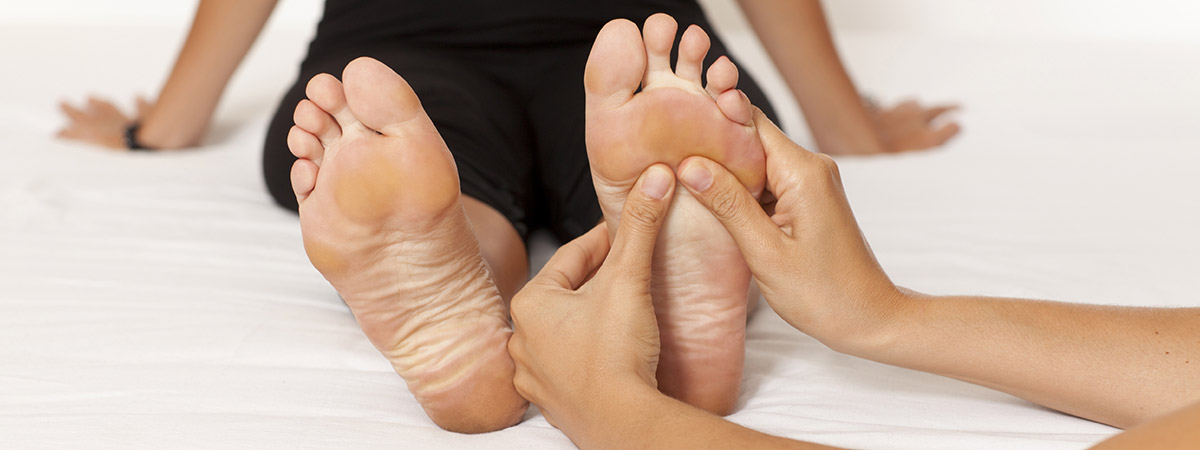What is Reflexology?
Reflexology works on the principle that the organs, glands and systems of the body are reflected on the feet and hands.
Reflexology is holistic, taking into account your emotional and mental wellbeing as well as physical symptoms. This means that every session is bespoke, responding to your unique needs each time.
In contrast to a foot massage, reflexology uses a unique combination of finger and thumb pressure to stimulate specific reflex areas. The aim is to improve blood circulation, restore balance, encourage relaxation and invigorate the health of the client.
I specialise in supporting clients with stress, stress-related conditions and anxiety. My clients seek support for conditions including general wellbeing, sleep issues, support whilst grieving, digestive issues, and women’s health conditions including fertility, hormonal imbalances, irregular periods and peri-menopausal symptoms.
Contact me to find out more
How can Reflexology help me?
Reflexology’s aim is to rebalance the body’s systems, relax mind and body and encourage the body to heal itself.
People have enjoyed reflexology for a range of conditions including stress and anxiety, insomnia, adrenal fatigue, muscular tension, poor digestion, period pain, PMS, asthma, headaches and migraines.
It may work alongside conventional medicine to promote relaxation for people going through chronic illnesses such as Multiple Sclerosis or cancer treatment.
Anne talks about how reflexology has supported her with her health >
What happens in a treatment?
At your first session, we discuss your medical history and details about your lifestyle and dietary habits. We will chat about your general sense of wellbeing and your reasons for coming. I combine this with an examination of your feet and an exploration of the reflexes.
At follow up sessions we start by discussing any progress you’ve made or any current conditions you might have. I’ll then put together a treatment plan for future sessions.
For the session itself, you’ll be lying on a couch or reclining chair, with your shoes and socks off. I’ll often include working the lower legs, so I may ask you to roll your trousers up to the knee.
The session includes some relaxation techniques as well as some more in-depth techniques for different reflexes and areas of the foot. These more in-depth techniques can cause some sensitivity, but the sensation passes quickly and is always within your range of comfort.
How will I feel after a treatment?
The effects of reflexology are unique to each person.
Most people feel wonderfully relaxed and some can find it uplifting and energising. Some people might feel tired or lethargic directly after a treatment, but this can pass and be replaced with increased energy and the ability to sleep more deeply that night.
Occasionally, other reactions to treatment may occur, such as headaches. This is rare, and can be due to the toxins being released from the body, and the body rebalancing and cleansing itself.
Find out more about after care advice >
How many treatments will I need?
Whilst reflexology can be enjoyed as a one-off relaxation session, the therapeutic effects of reflexology are cumulative. A course of around six to eight weekly or fortnightly treatments is recommended to experience any changes to acute or long-term conditions.
After an initial course, clients enjoy coming for a session once every four to six weeks as a preventative and maintenance programme.
How much does it cost?
An hour session of Reflexology costs £50.
There is also an option to book a 45 minute session to try it out first, and you can save on six sessions if you pay for a block.
You can find more information on my prices page.

